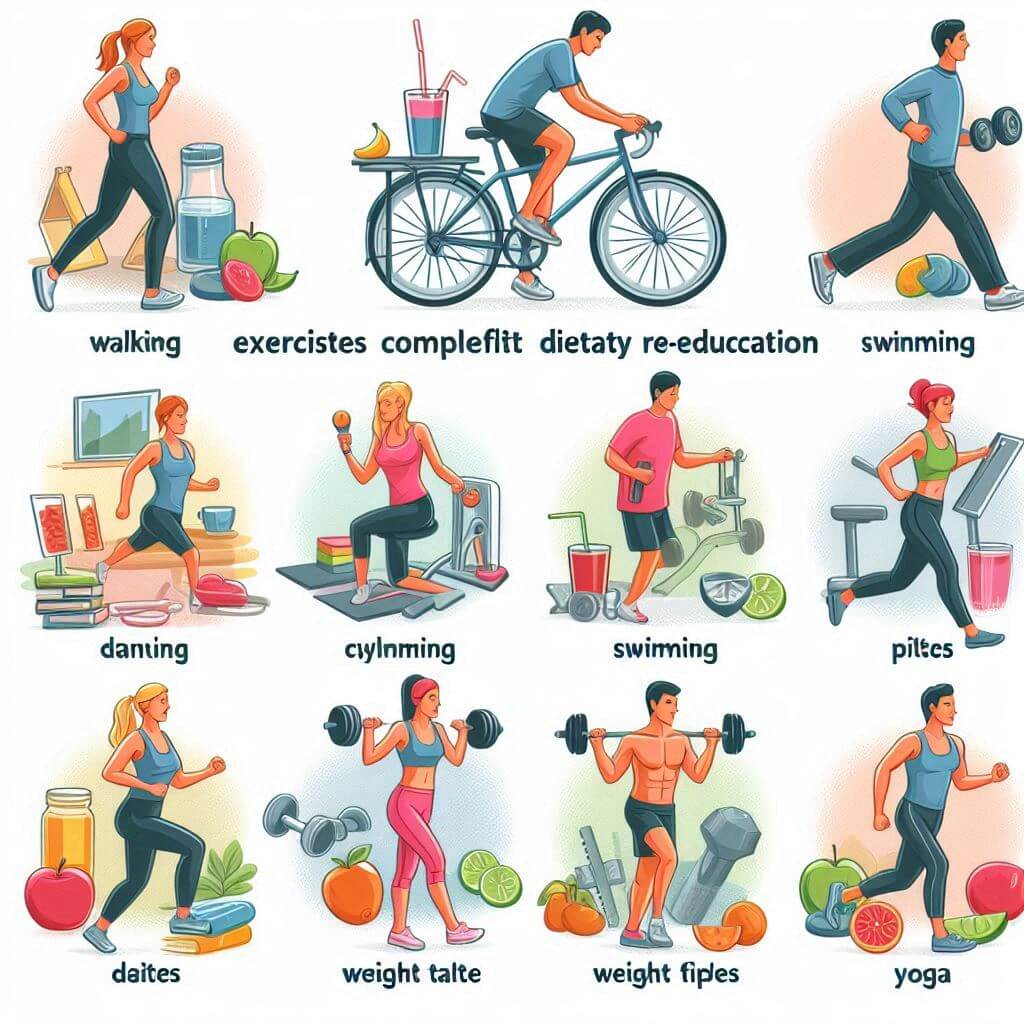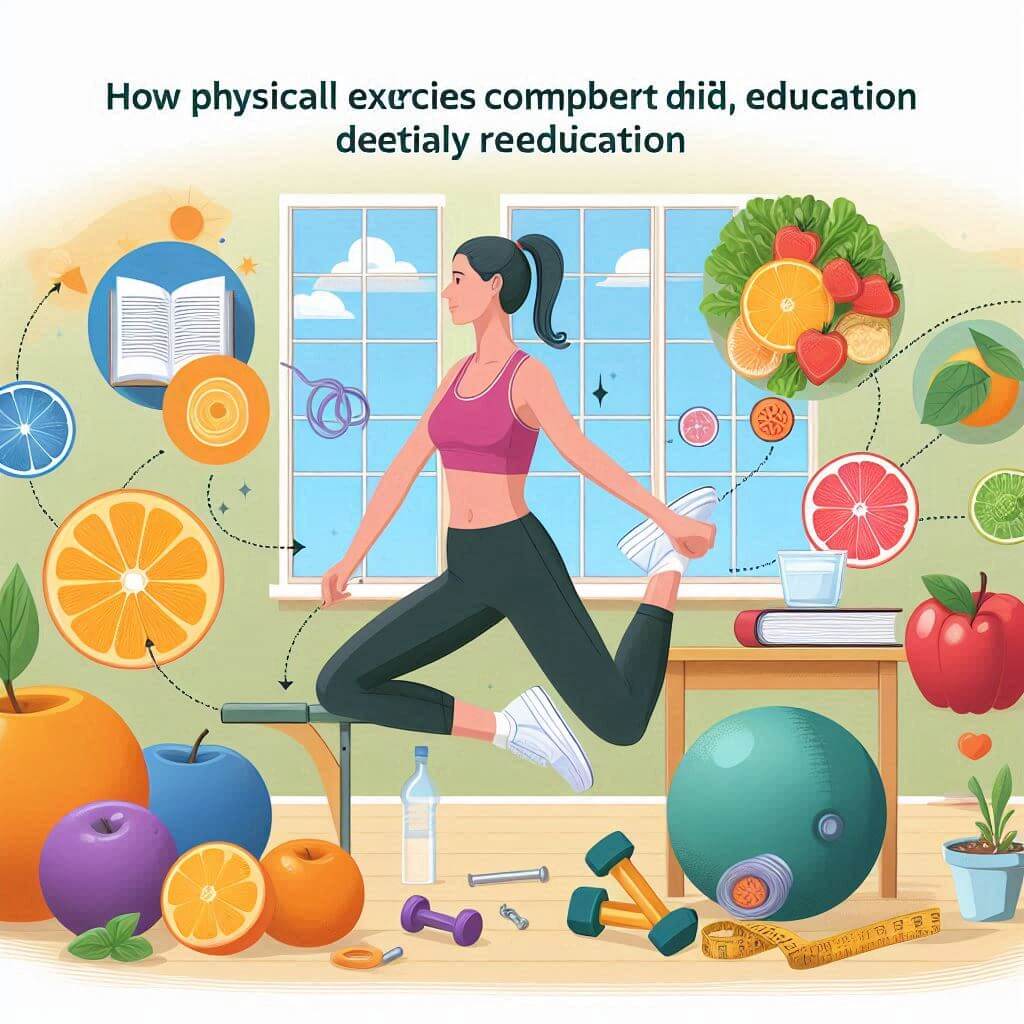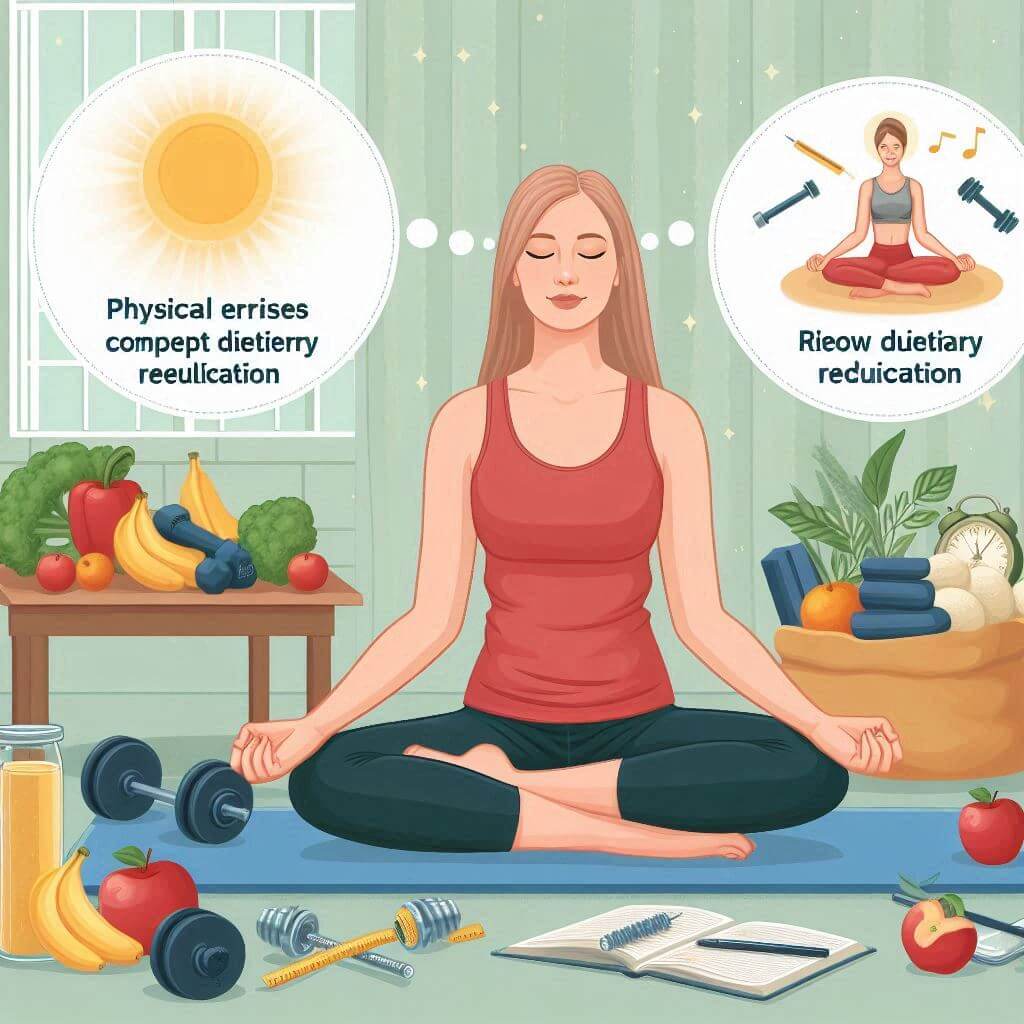THE nutritional reeducation is a fundamental approach to achieving a food healthy and balanced.
However, to obtain even more effective and lasting results, it is important to combine dietary re-education with regular physical exercise.
In this article, I will explore the importance of physical exercise in nutritional reeducation, the benefits of this combination, and the types of exercise that complement nutritional reeducation.
How exercise helps with weight loss during a healthy eating plan, the role of physical exercise in maintaining a healthy lifestyle, tips for integrating exercise into your eating plan.
Common myths about exercise and eating disorders, success stories of people who combined exercise with nutritional reeducation, professional guidelines and resources for integrating physical exercise with nutritional reeducation. Let's get started!
The importance of physical exercise in nutritional reeducation
Food reeducation is a process that aims to teach the individual to make healthy and balanced food choices.
However, incorporating physical exercises into this process is essential to enhance results.
Physical exercise helps to speed up the metabolism, increase calorie burning and promote healthy weight loss.
Furthermore, exercise promotes the release of endorphins, substances responsible for the feeling of well-being and pleasure, which can help reduce binge eating and improve mood.
Benefits of combining exercise with nutritional re-education

The combination of physical exercise with nutritional re-education brings a series of benefits to health and well-being.
In addition to helping with weight loss, this combination contributes to muscle strengthening, improves cardiovascular resistance, increases flexibility and motor coordination, reduces the risk of chronic diseases, such as diabetes and cardiovascular diseases, and improves sleep quality.
Furthermore, regular exercise helps to increase self-esteem and self-confidence, promoting greater adherence to dietary re-education and a healthy lifestyle in the long term.
Types of exercises that complement nutritional reeducation
There are several types of physical exercises that can be incorporated into nutritional reeducation.
The important thing is to choose activities that are enjoyable and that can be practiced regularly.
Some examples of exercises that complement nutritional reeducation are: walking, running, cycling, swimming, dancing, weight training, pilates, yoga, among others.
It is important to vary activities to work different muscle groups and maintain motivation.
It is also recommended to consult a physical education professional to guide you in choosing the most appropriate exercises for each individual, taking into account their physical condition and specific goals.
How exercise helps with weight loss during a nutritional reeducation

Physical exercise plays a fundamental role in weight loss during dietary reeducation.
When you exercise, your body burns extra calories, which contributes to a negative calorie balance and, consequently, weight loss.
Furthermore, exercise helps to preserve muscle mass during the weight loss process, which is important for maintaining a fast metabolism and avoiding the yo-yo effect.
It is important to emphasize that healthy weight loss occurs gradually, with a balanced combination of calorie restriction and regular exercise.
The role of physical exercise in maintaining a healthy lifestyle
Regular exercise not only helps you lose weight during your diet, but also plays a key role in maintaining a healthy lifestyle in the long term.
Exercise promotes weight maintenance, helps control appetite and binge eating, improves sleep quality, reduces stress and anxiety, strengthens the immune system, improves cardiovascular health and physical endurance, and contributes to emotional and mental well-being.
Therefore, it is essential to maintain regular exercise even after reaching your weight loss goals in order to ensure a healthy and balanced life.
Tips for integrating exercise into your eating plan

Integrating exercise into your eating plan may seem challenging at first, but with a few simple tips, you can make this combination part of your daily routine.
First, it's important to set realistic goals and establish an exercise schedule that's achievable for you.
Start slowly and gradually increase the intensity and duration of the exercises gradually.
Choose activities that you enjoy and that can be done at different times of the day, depending on your availability.
It's also important to find a workout partner or join a group class, as this can increase motivation and make exercise more fun.
Remember to always consult a physical education professional to receive appropriate guidance and avoid injuries.
Common myths about exercise and nutritional re-education
There are some common myths about exercise and healthy eating that can confuse people.
One such myth is that you need to exercise intensely for long periods of time to see results.
In fact, the key is in the regularity and consistency of the exercises, not the intensity.
Another myth is that you can compensate for an inadequate diet with physical exercise.
Although exercise helps burn extra calories, it does not compensate for an unbalanced diet.
Dietary re-education and exercise should be approached in a complementary manner, aiming for a healthy lifestyle as a whole.
Success stories of people who combined exercise with nutritional re-education

Many people have already had success combining exercise with nutritional re-education.
Their inspiring stories show how this combination can bring significant results for health and well-being.
For example, Joana, after adopting a new eating plan, started taking daily walks and lost 15 kilos in six months. Pedro, on the other hand, chose to do weight training and managed to gain muscle mass while losing fat.
These examples show that each individual can find the combination of exercises that best suits their needs and goals, and achieve positive results.
Professional guidelines and resources for integrating physical exercise with nutritional reeducation
To integrate physical exercise with nutritional re-education in an appropriate way, it is essential to seek professional guidance.
A nutritionist can help you develop a meal plan that suits your needs and goals, while a physical education professional can guide you in choosing exercises and creating a personalized training program.
Additionally, there are a variety of professional resources available, such as exercise and healthy eating apps, books, and online courses, that can provide additional information and support in this process.
Conclusion
Combining physical exercise with nutritional re-education is an effective strategy for achieving a healthy and balanced life.
Exercise helps to enhance the results of dietary re-education, promoting healthy weight loss, strengthening the body, improving cardiovascular resistance and contributing to maintaining the weight lost.
Furthermore, physical exercise brings a series of benefits to health and well-being, helping to reduce the risk of chronic diseases, improve mood and promote greater adherence to dietary re-education.
Therefore, be sure to include physical exercise in your diet plan and enjoy all the benefits that this combination can bring to your life.
(Frequently Asked Questions):
| Question | Response |
|---|---|
| How important is physical exercise in nutritional reeducation? | Exercising speeds up your metabolism, increases calorie burning, promotes healthy weight loss and releases endorphins that help improve your mood and reduce binge eating. |
| What are the benefits of combining physical exercise with nutritional re-education? | The combination strengthens muscles, improves cardiovascular endurance, increases flexibility, reduces the risk of chronic diseases, improves sleep quality, and increases self-esteem and self-confidence. |
| What types of exercises complement nutritional reeducation? | Walking, running, cycling, swimming, dancing, weight training, pilates and yoga are examples of activities that can be practiced regularly. |
| How does physical exercise help with weight loss during dietary reeducation? | Exercise burns extra calories, contributes to a negative calorie balance, and helps preserve muscle mass, which keeps your metabolism revved up. |
| Why is it important to continue exercising after reaching your goal weight? | Exercise helps maintain weight loss, controls appetite, reduces stress, improves cardiovascular health, and maintains mental and physical well-being. |
| What are some tips for integrating exercise into your eating plan? | Set realistic goals, choose enjoyable activities, start slowly and build up intensity gradually, and find a workout partner or group classes for added motivation. |
| What are the common myths about exercise and healthy eating? | One myth is that you need to exercise intensely for long periods of time to get results. Another is that exercise can compensate for an inadequate diet, which is not true. |
| How to seek professional support to integrate exercise into nutritional reeducation? | Consult a nutritionist for an appropriate eating plan and a physical education professional to develop a personalized exercise program. |









